Fiberglass: An Overview
Fiberglass is a composite material made of fine glass fibers and resin. It is known for its high strength, durability, and versatility, making it a popular choice for a wide range of applications.
Composition
Fiberglass is made from thin strands of glass, which are woven together to form a flexible fabric. This fabric is then typically saturated with a resin to create the final composite material.
Properties
Some key properties of fiberglass include:
- Strength: Fiberglass is known for its high tensile strength, making it suitable for use in structures and products that require durability.
- Lightweight: Despite its strength, fiberglass is relatively light, making it easy to work with and transport.
- Corrosion Resistance: Fiberglass is resistant to corrosion, making it ideal for use in outdoor and marine applications.
- Insulation: Fiberglass has excellent thermal and electrical insulation properties, making it suitable for use in various industries.
Applications
Fiberglass is used in a wide variety of applications, including:
- Construction: for insulation, roofing, and structural components
- Automotive: in the production of car bodies, panels, and components
- Marine: for boat hulls, decks, and other marine components
- Aerospace: in the manufacturing of aircraft components and structures
- Sports equipment: such as skis, snowboards, and surfboards
Study Guide
When studying fiberglass, it's important to focus on the following key areas:
- Understanding the composition of fiberglass and the process of manufacturing it.
- Exploring the properties of fiberglass and how they contribute to its suitability for various applications.
- Learning about the wide range of applications where fiberglass is used and the specific advantages it offers in each case.
- Considering the environmental impact of fiberglass production and potential alternatives or sustainable practices.
◂Science Worksheets and Study Guides First Grade. Food Chains
Study Guide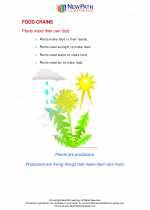 Food Chains
Food Chains  Activity Lesson
Activity Lesson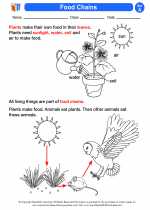 Food Chains
Food Chains  Worksheet/Answer key
Worksheet/Answer key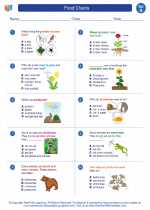 Food Chains
Food Chains  Worksheet/Answer key
Worksheet/Answer key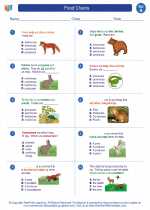 Food Chains
Food Chains  Worksheet/Answer key
Worksheet/Answer key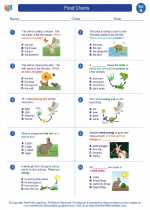 Food Chains
Food Chains  Worksheet/Answer key
Worksheet/Answer key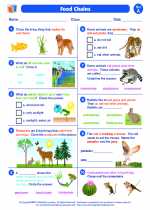 Food Chains
Food Chains  Vocabulary/Answer key
Vocabulary/Answer key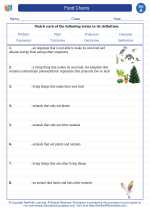 Food Chains
Food Chains  Vocabulary/Answer key
Vocabulary/Answer key Food Chains
Food Chains 

 Activity Lesson
Activity Lesson
 Worksheet/Answer key
Worksheet/Answer key
 Worksheet/Answer key
Worksheet/Answer key
 Worksheet/Answer key
Worksheet/Answer key
 Worksheet/Answer key
Worksheet/Answer key
 Vocabulary/Answer key
Vocabulary/Answer key
 Vocabulary/Answer key
Vocabulary/Answer key

The resources above cover the following skills:
LIFE SCIENCE
From Molecules to Organisms: Structures and Processes
Design a solution to a human problem by using materials to imitate how plants and/or animals use their external parts to help them survive, grow, and meet their needs (e.g., outerwear imitating animal furs for insulation, gear mimicking tree bark or shells for protection).